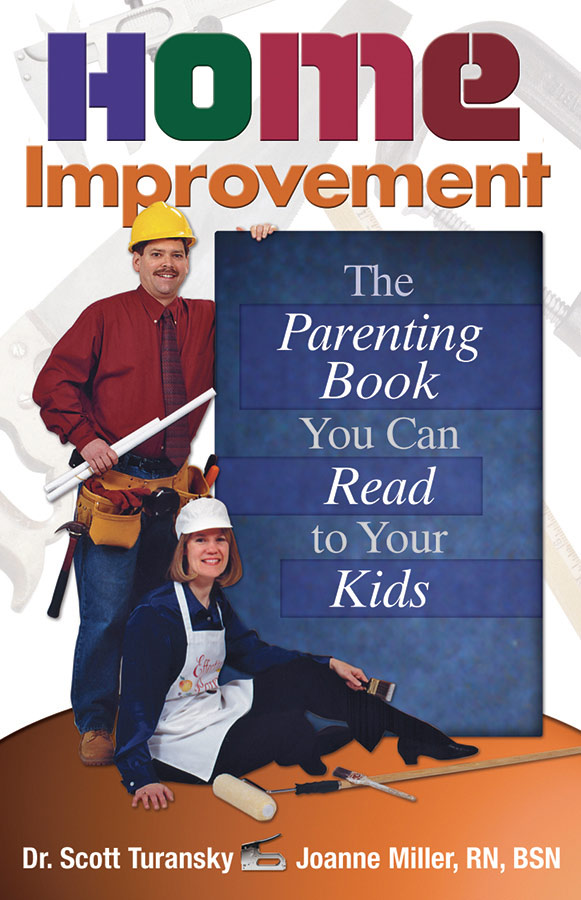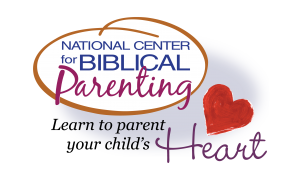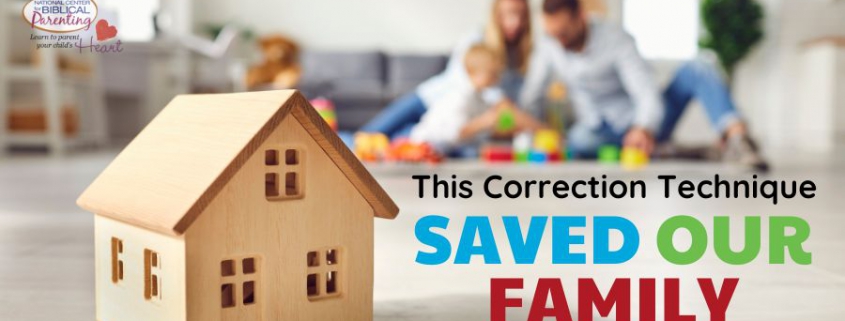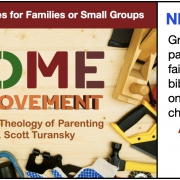This Correction Technique Saved Our Family!
Correction is a vital aspect of parenting, yet it often sparks tension, resistance, and even drama within family dynamics. As parents, we must equip ourselves with effective strategies to navigate the challenging terrain of correction. Moreover, it’s crucial for children to develop a proper understanding of correction and its role in their lives. Let’s explore the theology of correction and share practical tools that can help children embrace correction and respond in a healthy manner.
Mary, a mother of four said, “This one tool has saved our family! It wasn’t easy to learn but it stopped the escalation on the part of our kids and us as parents.” We’ve heard that comment over and over again, so we wanted to share this idea specifically with you.
Correction as a Gift: Shifting the Perspective
Before we get into the technique, let’s talk about some theology. This will help embed your parenting into your faith. To facilitate a healthier perspective on correction, we can reframe it as a gift. Children need to understand that correction is not meant to make them feel bad about themselves. Instead, correction is a valuable tool that helps them grow, learn, and make positive changes.
By changing their perspective and helping them embrace correction as a gift, we empower children to view it as an opportunity for personal development. Proverbs 6:23 says, “The corrections of discipline are the way to life.” Correction is a gift that helps us grow.
The Break: Slowing Escalation and Cultivating Self-Reflection
Unlike a traditional timeout focused on punishment, we created a Break that serves as a means to slow down the escalation of emotions during correction. It’s not about isolating the child, but rather redirecting the child’s focus inward for self-reflection and emotional regulation.
When implementing the Break, it’s important to choose a neutral and unstimulating location, such as sitting on a step or a quiet area. Using gentle and clear language, parents can instruct their child to “Take a Break, settle down, change your heart, and come back when you’re ready.” The break emphasizes the child’s responsibility to calm down and provides an opportunity for the child to process the emotions and then report back for a debriefing.
Patience and Time: Allowing the Conscience to Work
Sometimes, children may resist the Break or display defiant behavior. In such instances, it’s crucial for parents to stand their ground and calmly reiterate the importance of the Break. But that doesn’t mean that you engage in a battle. With a young child you might pick that child up and put them in a Break place. But with an older child you might repeat the instruction again saying, “You need to take a Break.”
Then you can walk away for a few minutes. By allowing time for the child’s conscience to work and for emotions to settle, you provide an opportunity for the child to comply. The Break is a strategic pause that allows children to redirect their focus from the intensity of the moment towards self-correction and growth.
Building Life Skills: The Long-Term Impact of Correction
Our efforts to help children accept correction lay the foundation for essential life skills. By teaching them to navigate correction effectively, we equip them with valuable tools they will rely on throughout their lives. Just as we wish for adults to learn the importance of taking a Break in their interactions, you can instill this principle in children from a young age.
By embracing correction and cultivating a healthy response to it, children grow into individuals who can acknowledge their mistakes, make necessary changes, and experience personal growth. They know when they are off track and can take a Break before reentering.
Correction Isn’t Easy
Navigating the realm of correction within the family is no small feat. It requires patience, persistence, and an unwavering commitment to fostering growth and healthy responses in our children. As parents, we must model gentleness and spirituality while relying on a theology of correction.
By utilizing the Break technique, you can guide your child toward internalizing the significance of correction and embracing it as a catalyst for personal development.
Correction is an integral part of building life skills and character in children. By walking alongside them with love, grace, and unwavering support, you can create a nurturing environment where correction becomes a transformative force for growth and resilience, and prevent the escalation that often occurs during correction experiences.
To delve deeper into the practical implementation of the Break technique, we invite you to explore Chapter 3 of Home Improvement: The Parenting Book You Can Read to Your Kids and its accompanying video series. Discover how this transformative course can shape your family’s dynamics and facilitate an environment of love, growth, and restoration.
Remember that repentance is God’s catalyst for change and the cornerstone of a thriving family. Embrace its power and witness the remarkable transformation it brings into your lives. Together, you can cultivate a culture of repentance, grace, and renewal within your family.









Leave a Reply
Want to join the discussion?Feel free to contribute!